FIBER-OPTIC SPEEDS
How fast is Fiber-Optic Internet?
If fiber optic internet had a synonym it would be fast. Just how fast is fiber internet you ask? Typical download speeds for a fiber connection are 1,000 Mbps, aka 1 GB. Cable and DSL providers could only dream about this much bandwidth. Let me give you a scenario to illustrate just how fast this is. High-speed internet is defined as any connection that offers download speeds of 25 Mbps or more. Let's say you currently have internet speeds of 25 Mbps. If you were to switch to a 1 GB fiber internet connection, you'd experience download speeds 40 times faster than before. Yes, you heard me right, 40. This means you can download your favorite movies in HD, all your favorite songs, or a game in seconds. You'll also be able to connect as many devices to the internet as you want without experiencing any lag. Fiber optic internet basically hands out bandwidth as generously as Oprah Winfrey hands out gifts.
You'll also be able to send your data over a much farther distance without losing any speed. So if you're trying to send a video of your baby's first steps to your grandma in Europe, she'll be able to share the excitement in real time. The exact internet speeds for a fiber optic connection will depend on the provider. Some offer less than 1,000 Mbps. Heck, some even claim to offer more than 1,000 Mbps. Whatever provider you choose, the important thing to know is that your fiber internet connection will be ultra-fast and reliable. You might be wondering why fiber is so fast. Check out our “what is fiber internet?” section for all the details.
At 1,000 Mbps (1 GBPS):

- Play your favorite game online with 0 lag
- Download a 30GB game on your computer in less than 5 minutes

- Download an entire HD movie in 34 seconds
- Load your favorite Netflix show in HD in 5 seconds

- Download a 4-minute song in 0.03 seconds
- Load your favorite YouTube video in 0.2 seconds
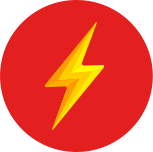
- A connection that's 40 times faster than the definition of broadband
- Download speeds 50 times faster than the national average
- Faster than other connection types
- Highly reliable connection
- You won't have to share bandwidth with your neighbors
- Secure connection
- Fast download AND upload speeds
- Rapidly expanding nationwide
- Durability
- Usually more expensive
- Limited availability
- Requires new infrastructure
- More speed than you probably need
Fiber-Optic technology
Fiber optic internet is a connection that uses teeny tiny strands of glass or plastic (the size of a human hair) to send data from place to place. Imagine these strands as roads that allows files and data to travel across them. The cars on this road are individual bursts of light. Each car (or light burst) is carrying your data. Whether it's a movie you're downloading, an email you're sending, or a game you're playing, that car is going to take it wherever it needs to go. Ever heard the phrase “at the speed of light?” It means that light can travel at very high speeds, which is why fiber optic internet is so fast. Ever heard the term “at the speed of electricity?” Yeah, I haven't either. Other types of internet use electricity to carry data from place to place, which is much slower.

How reliable is Fiber Optic Connection?
Fiber optic internet is much more reliable than other high-speed connections for several reasons. You might be thinking that those glass strands the size of a hair would be very fragile. However, this isn't the case. While copper lines can only handle about 25 pounds of pressure, fiber can sustain up to 200 pounds of pressure. This means that any routine operations or maintenance needs won't damage fiber cables, because they're very sturdy. On the other hand, copper cables can be easily damaged. Bad weather, high pressure, extreme temperature changes, or even moisture can interfere with their ability to transmit data. Your internet might be down for the day just because of a heavy rainstorm. I don't know about you, but to me that doesn't sound very reliable. The glass cables used for fiber optic internet also last longer. Copper cables wear out much quicker and require more maintenance over the years. They can even be a fire hazard when they're worn down, because they carry electric currents (yikes). So even if you're paying a little more for a fiber internet connection right now, it's going to have higher long term value and reliability.






What's the installation process for Fiber-Optic Internet?
If you've decided that fiber is the right internet connection for you and it's available in your area, you'll need to go through the installation process. This process will vary, depending on your location and provider. Because fiber is wired straight to your home or a nearby node, you may need new lines installed to your house. This might sound like a hassle at first, but not to worry! Your internet provider's trained professionals will make this process as painless as possible. The new cables will be buried underground or strung across telephone poles by a technician.
Aerial installations along telephone lines can typically be done in a single day, while underground installation might take a bit longer. The location of these lines will depend on the provider. If a fiber-optic connection has been set up by a past resident, you won't need the new lines. After the fiber cables have been established, the technician will install a modem to finish setting up your fiber optic internet. Then voilà, your high speed internet connection is ready to go.
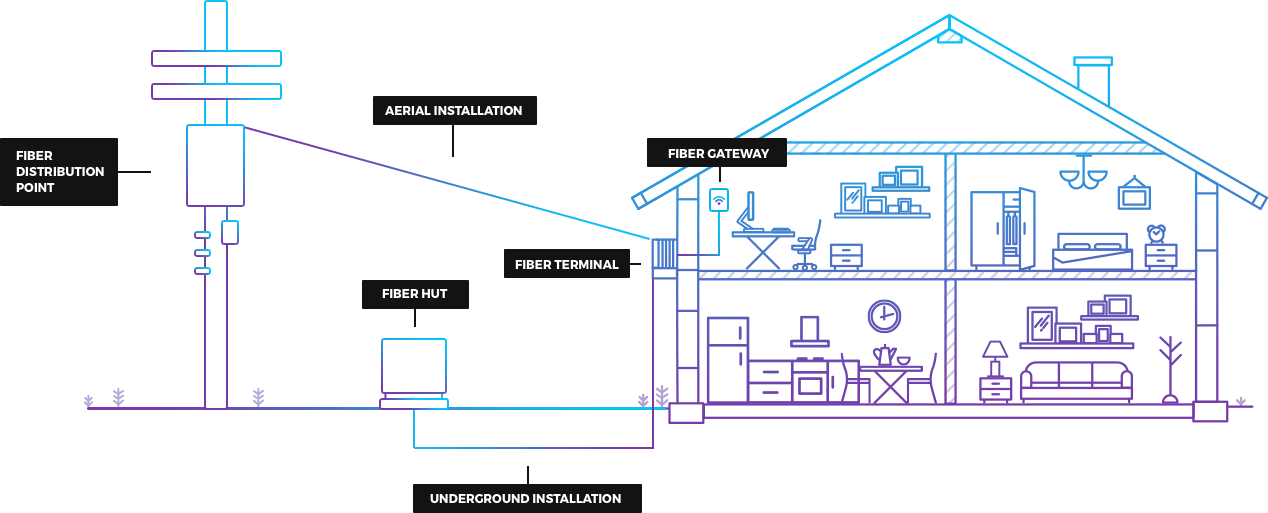
List of Fiber Optic Internet Providers
The number of fiber internet providers in the country is growing, as its availability spreads. Currently, the largest fiber provider is Verizon. Verizon Fios is available to about 10% of the nation. This high-speed internet provider offers plans with download speeds up to 1,000 Mbps in certain areas. AT&T Fiber is another option, with nationwide coverage of about 3%. You'll be able to get internet packages with download speeds up to 100 Mbps, depending on your area. Frontier FiOS also reaches about 3% of the nation. These fiber optic internet plans provide download speeds up to 500 Mbps. Another option is Cox Communications' Gigablast internet, which offers download speeds up to 1,000 Mbps. Type in your zipcode at the top of the page to see which fiber providers are available in your area!
| Provider: | Fastest Speeds: | Coverage: | Households Served: |
|---|---|---|---|
 AT&T
AT&T
|
5 Gbps | 16.8% | 22,450,028 |
 Verizon
Verizon
|
2 Gbps | 11.8% | 15,512,719 |
 EarthLink
EarthLink
|
5 Gbps | 10.3% | 13,689,833 |
 Frontier
Frontier
|
5 Gbps | 5% | 6,381,917 |
 CenturyLink
CenturyLink
|
1000 Mbps | 3.8% | 5,538,672 |
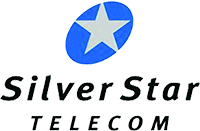 SST
SST
|
10 Gbps | 2.1% | 2,885,677 |
 Optimum
Optimum
|
8 Gbps | 2% | 2,430,000 |
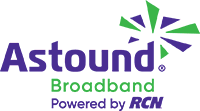 Astound Broadband Powered by RCN
Astound Broadband Powered by RCN
|
5 Gbps | 1.9% | 2,903,427 |
 Google Fiber
Google Fiber
|
8 Gbps | 1.3% | 1,791,653 |
 Windstream
Windstream
|
8 Gbps | 1% | 1,463,007 |
 Metronet
Metronet
|
10 Gbps | 1% | 1,342,549 |
 Xfinity
Xfinity
|
10 Gbps | 0.8% | 1,338,540 |
 Fidium
Fidium
|
2 Gbps | 0.7% | 960,437 |
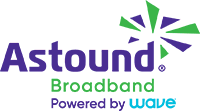 Astound Broadband Powered by Wave
Astound Broadband Powered by Wave
|
5 Gbps | 0.7% | 1,010,953 |
 Ziply Fiber
Ziply Fiber
|
5 Gbps | 0.7% | 899,635 |
 C Spire Fiber
C Spire Fiber
|
8 Gbps | 0.6% | 884,603 |
 altafiber
altafiber
|
2 Gbps | 0.6% | 795,143 |
 Cox
Cox
|
2 Gbps | 0.5% | 818,769 |
 TDS Telecom
TDS Telecom
|
2 Gbps | 0.4% | 609,178 |
 Armstrong
Armstrong
|
1000 Mbps | 0.4% | 531,957 |
 ACDnet
ACDnet
|
1000 Mbps | 0.3% | 530,444 |
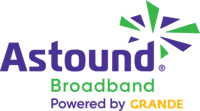 Astound Broadband Powered by Grande
Astound Broadband Powered by Grande
|
5 Gbps | 0.3% | 549,639 |
 Sonic
Sonic
|
10 Gbps | 0.3% | 449,521 |
 Claro Internet
Claro Internet
|
1000 Mbps | 0.3% | 549,268 |
 Hawaiian Telcom
Hawaiian Telcom
|
1000 Mbps | 0.3% | 329,243 |
 Hotwire Communications
Hotwire Communications
|
10 Gbps | 0.2% | 460,059 |
 Ezee Fiber
Ezee Fiber
|
8 Gbps | 0.2% | 322,600 |
 Zito Media
Zito Media
|
1000 Mbps | 0.2% | 357,841 |
 FirstDigital Telecom
FirstDigital Telecom
|
10 Gbps | 0.2% | 257,134 |
 SUMOFIBER
SUMOFIBER
|
1000 Mbps | 0.2% | 230,653 |
 SenaWave
SenaWave
|
1000 Mbps | 0.2% | 210,113 |
 Point Broadband
Point Broadband
|
1000 Mbps | 0.2% | 286,222 |
 WOW!
WOW!
|
10 Gbps | 0.2% | 276,609 |
 123NET
123NET
|
10 Gbps | 0.2% | 282,507 |
 GoNetspeed
GoNetspeed
|
1000 Mbps | 0.2% | 243,126 |
 NTS
NTS
|
2 Gbps | 0.2% | 247,645 |
 Socket Telecom
Socket Telecom
|
10 Gbps | 0.2% | 231,218 |
 Great Plains
Great Plains
|
1000 Mbps | 0.1% | 212,702 |
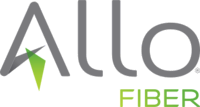 Allo
Allo
|
2.3 Gbps | 0.1% | 209,774 |
 SmartCom Telephone
SmartCom Telephone
|
10 Gbps | 0.1% | 168,893 |
 Lumos
Lumos
|
10 Gbps | 0.1% | 205,645 |
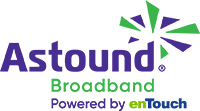 Astound Broadband Powered by En-Touch
Astound Broadband Powered by En-Touch
|
5 Gbps | 0.1% | 158,570 |
 Shentel
Shentel
|
2 Gbps | 0.1% | 206,743 |
 Warren Wireless
Warren Wireless
|
10 Gbps | 0.1% | 208,541 |
 Clear Rate Communications
Clear Rate Communications
|
10 Gbps | 0.1% | 209,040 |
 Liberty Cablevision
Liberty Cablevision
|
1000 Mbps | 0.1% | 190,343 |
 EPB
EPB
|
10 Gbps | 0.1% | 167,477 |
 Ritter
Ritter
|
1.024 Gbps | 0.1% | 167,321 |
 i3 Broadband
i3 Broadband
|
1000 Mbps | 0.1% | 167,225 |
 Horry Telephone Cooperative
Horry Telephone Cooperative
|
1000 Mbps | 0.1% | 186,989 |
- Previous
- 1
- 2
- 3
- 4
- 5
- Next
Fiber vs Cable Internet
So far, fiber optic internet sounds pretty great right? Let's see how it holds up against other types of internet. We'll use a fiber optic vs. cable internet comparison. As far as speed goes, fiber is the faster choice: hands down. Fiber internet also let's you send data faster over farther distances than cable. Cable still offers a high-speed connection, with plans that can reach download speeds up to 300 Mbps depending on the provider. This is plenty of speed for larger households that are connecting multiple devices to the internet at once. If you're getting a 1,000 Mbps fiber optic internet plan, chances are you won't need that much speed. Cable plans are also typically less expensive than fiber packages, so if you're on a budget cable may be a better option for you. However, fiber internet is much more reliable than cable.
Remember those copper cables we talked about that can be damaged easily? Cable internet cables are made of copper. This means that you'll probably experience some outages from time to time. After sustaining some wear and tear, copper cables can even become a fire hazard. These cables have to be replaced and repaired more often than fiber cables do, because the plastic or glass is less susceptible to damage. So, even though fiber is the more expensive choice, it has higher long term value than cable, because it is more reliable and requires less maintenance over the years.
We all want to be that friendly person who lets the neighbor borrow a cup of sugar from time to time. However, no one wants to lend some of their bandwidth and internet speed to the neighbors. Binge watching our favorite Netflix shows is far too important for that. With a cable connection, you share bandwidth speed with your neighbors, whether you want to or not. This means that when lots of people are using cable at one time, your internet is going to slow down. During peak hours with high internet traffic you'll probably experience some lagging and buffering. Because fiber optic internet is wired straight to your house, you won't have to share your bandwidth with the neighbors. No matter what time of day it is or how many people on your street are using the internet, you'll still get the same speed.
Now that we've given you the rundown, let's consider what type of internet is going to be available in your area. Cable internet is widely available, reaching nearly 90% of the nation. Chances are you'll be able to find a cable provider in your area. As for fiber, it is only available to about 25% of the country. On the brightside, fiber optic internet is expanding rapidly. If it's not available to you now, it might be soon! Type in your zipcode at the top of the page to see what types of internet are available to you.
| Internet Type | Fiber | Cable |
|---|---|---|
| Download Speed Range | 5 Mbps to 8000 Mbps | 5 Mbps to 3000 Mbps |
| Typical Price Range | $15 to $300 Per Month | $10 to $300 Per Month |
| Nationwide Availability | 43% Coverage | 88% Coverage |
| Typical Bandwidth | 15 GB to Unlimited | 1 GB to Unlimited |
Sources
https://www.business.org/services/internet/cable-vs-fiber-internet-service-right-business/
https://www.makeuseof.com/tag/cable-vs-fiber-internet-comparison/
https://www.atlantech.net/blog/8-advantages-of-fiber-optic-internet-over-copper-cable
https://business.cableone.net/business-resources/business-internet/choose-wisely-fiber-optic-vs-cable-internet
https://www.atlantech.net/blog/8-advantages-of-fiber-optic-internet-over-copper-cable
http://www.c1c.net/blog/the-pros-cons-and-difference-between-cable-and-fiber-optic-internet
